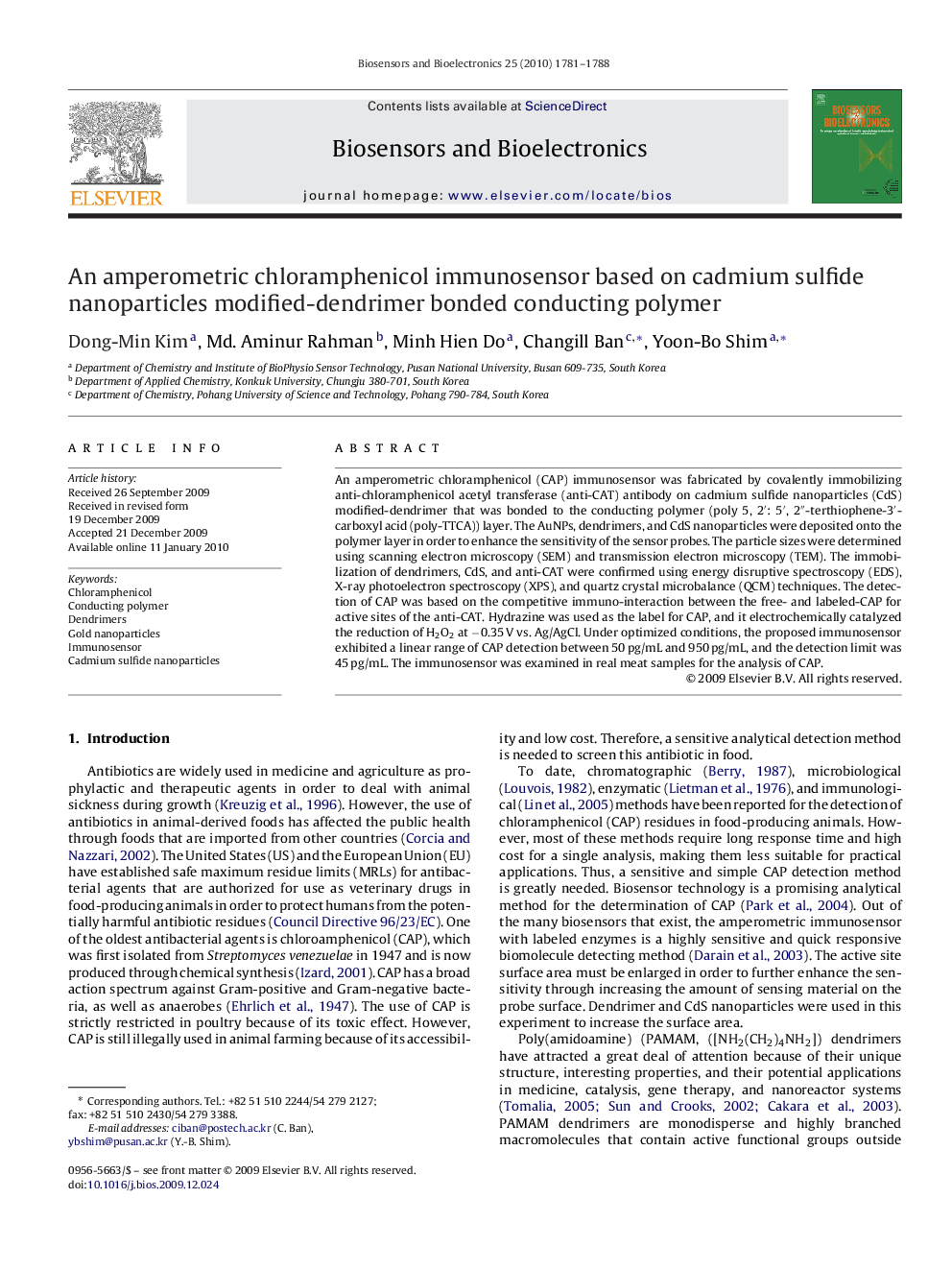| کد مقاله | کد نشریه | سال انتشار | مقاله انگلیسی | نسخه تمام متن |
|---|---|---|---|---|
| 867876 | 909795 | 2010 | 8 صفحه PDF | دانلود رایگان |

An amperometric chloramphenicol (CAP) immunosensor was fabricated by covalently immobilizing anti-chloramphenicol acetyl transferase (anti-CAT) antibody on cadmium sulfide nanoparticles (CdS) modified-dendrimer that was bonded to the conducting polymer (poly 5, 2′: 5′, 2″-terthiophene-3′-carboxyl acid (poly-TTCA)) layer. The AuNPs, dendrimers, and CdS nanoparticles were deposited onto the polymer layer in order to enhance the sensitivity of the sensor probes. The particle sizes were determined using scanning electron microscopy (SEM) and transmission electron microscopy (TEM). The immobilization of dendrimers, CdS, and anti-CAT were confirmed using energy disruptive spectroscopy (EDS), X-ray photoelectron spectroscopy (XPS), and quartz crystal microbalance (QCM) techniques. The detection of CAP was based on the competitive immuno-interaction between the free- and labeled-CAP for active sites of the anti-CAT. Hydrazine was used as the label for CAP, and it electrochemically catalyzed the reduction of H2O2 at −0.35 V vs. Ag/AgCl. Under optimized conditions, the proposed immunosensor exhibited a linear range of CAP detection between 50 pg/mL and 950 pg/mL, and the detection limit was 45 pg/mL. The immunosensor was examined in real meat samples for the analysis of CAP.
Journal: Biosensors and Bioelectronics - Volume 25, Issue 7, 15 March 2010, Pages 1781–1788